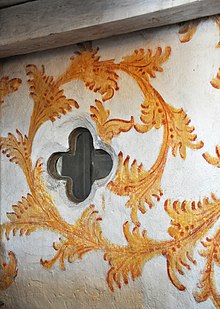
A recluse is a person who lives in voluntary seclusion and solitude. The word is from the Latin recludere, which means "shut up" or "sequester". Unlike common hermits, recluses shut themselves up in a cell so that they could not come out.[1]
Examples of recluses are Symeon of Trier, who lived within the great Roman gate Porta Nigra with permission from the Archbishop of Trier, or Theophan the Recluse, a 19th-century Orthodox Christian monk who was later venerated as a saint. Many celebrated figures of human history have spent significant portions of their lives as recluses.
In the Russian Orthodox and Catholic Church tradition, a Poustinik is a temporary hermit who has been called to pray and fast alone in a cabin for at least 24 hours. In ancient Chinese culture, scholars are encouraged to be a public servant in a scrupulous and well-run government but expected to go into reclusion as a yinshi (隐士, 'gentleman-in-hiding') when the government is rife with corruption.[2] Others, like Dongfang Shuo, became hermits to practice Taoism, or in later centuries, Chan Buddhism.
Notable recluses[edit]
See also[edit]
Notes[edit]
- ^ "CATHOLIC ENCYCLOPEDIA: Hermits".
- ^ Analects 8:13 《論語 · 泰伯》:天下有道則見,無道則隱。Show you talents [through public service] in a well-governed world; go into hiding in dark times (in Japanese).
References[edit]
 This article incorporates text from this source, which is in the public domain. Porter, Noah, ed. (1913). "Recluse". Webster's Dictionary. Springfield, Massachusetts: C. & G. Merriam Co.
This article incorporates text from this source, which is in the public domain. Porter, Noah, ed. (1913). "Recluse". Webster's Dictionary. Springfield, Massachusetts: C. & G. Merriam Co.


Well, that’s interesting to know that Psilotum nudum are known as whisk ferns. Psilotum nudum is the commoner species of the two. While the P. flaccidum is a rare species and is found in the tropical islands. Both the species are usually epiphytic in habit and grow upon tree ferns. These species may also be terrestrial and grow in humus or in the crevices of the rocks.
View the detailed Guide of Psilotum nudum: Detailed Study Of Psilotum Nudum (Whisk Fern), Classification, Anatomy, Reproduction